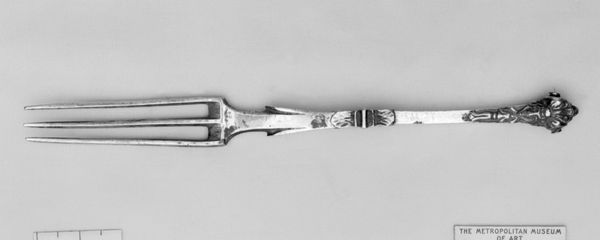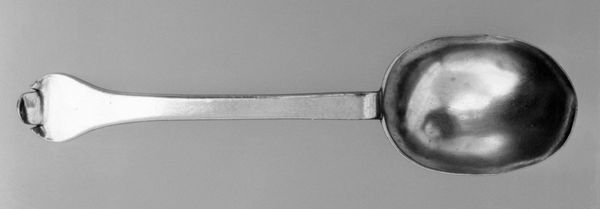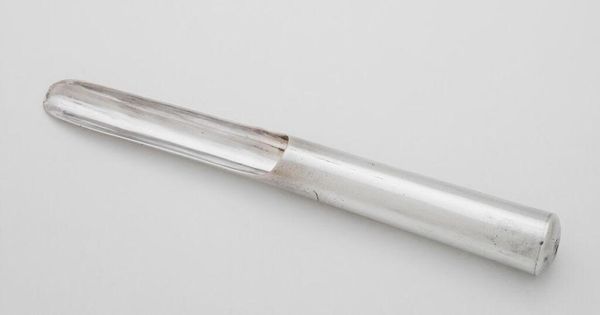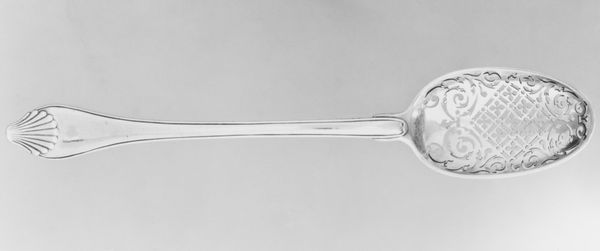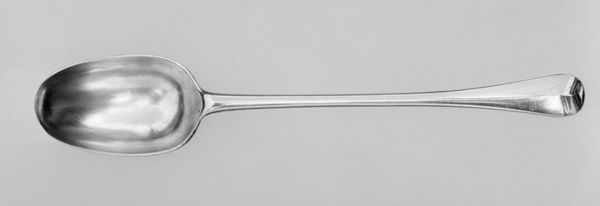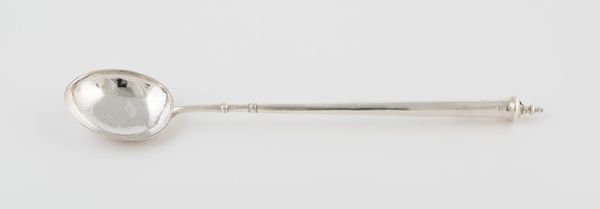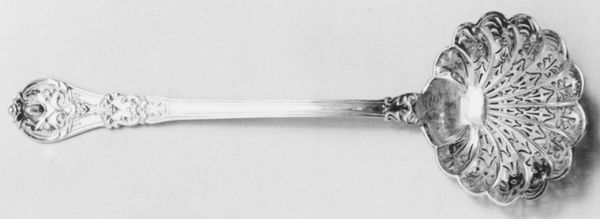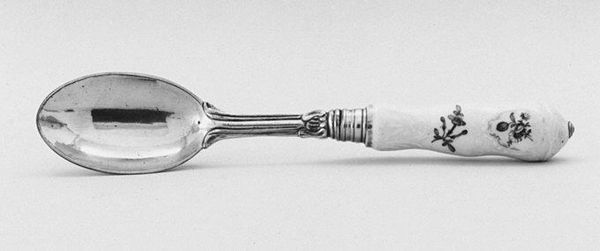
silver, metal, sculpture
#
silver
#
metal
#
sculpture
#
decorative-art
Dimensions: Length: 11 9/16 in. (29.4 cm)
Copyright: Public Domain
Curator: Welcome. We’re looking at a silver serving fork, believed to have been crafted between 1803 and 1813. It's a fascinating example of decorative art from the period, currently residing here at The Met. Editor: It looks quite sturdy, almost austere, for something that would be used at a table. There is something strangely utilitarian about it despite the delicate embellishment on the handle. Curator: Precisely. Utilitarian objects often reflect larger societal structures. Silver serving pieces during the early 19th century were visual markers of status and wealth. Possessing such items signaled belonging to a certain social stratum. Editor: I am thinking about the implications of wealth during that time. Consider that early 1800's America witnessed sharp wealth divisions intricately connected to enslaved labor. Even a seemingly benign object like a serving fork carries this silent history. Did its existence rely on the exploitation of others? Curator: That is a necessary question. Moreover, the fork's design speaks to broader aesthetic tastes circulating at the time. We see the influence of Neoclassicism, which was employed to communicate ideals of order and refinement. The streamlined shape contrasts dramatically with the more opulent Baroque styles from the previous century. Editor: The object does convey authority and privilege. Notice the deliberate smoothness and polish of the metal and then think of whose hands were actively polishing it? Who labored to make such luxurious objects presentable? Curator: Thinking about production brings new meanings into view. Historians like to explore how objects obtain these added social values. The artistry on display serves more than a practical purpose, but an indication of who deserves to be served. Editor: We must also be mindful to view objects like this as not merely inert decorations, but material traces connected to a difficult past that require interrogation. Curator: Agreed. It's in holding those two thoughts simultaneously—the artistic and the analytical—that enriches our appreciation, I think. Thank you for lending your perspective. Editor: Indeed, considering art objects this way allows for an important connection to both its beauty and difficult past. Thank you.
Comments
No comments
Be the first to comment and join the conversation on the ultimate creative platform.
